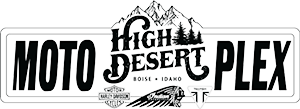
Everything You Should Check Before Riding Your Motorcycle
motoplex | March 30, 2020 | 0 | Harley Davidson , Indian Motorcycle , Lists , Riding , safety , Service , TriumphYour Pre-Ride Checklist
One of the best things about riding a motorcycle is the convenience. It’s easy to get around traffic. Easy for quick trips. Easy to park. It’s easy to store. It’s just a great way to make your life a lot easier. But sometimes we forget that owning a bike takes a little effort. It’s always good to check a few things over before jumping on your bike. It doesn’t take long and it could save your day, or even your life.
Tires
This is one of the easier ones, and easily the most important. We know a blowout or flat on a car or truck can slow down your day, but a tire incident on a motorcycle is far more dangerous. Start by using an air pressure gauge to check for tire air pressure, matching the reading to the manufacturer’s recommendations (printed either on the tire wall, owner’s manual, or on their website). Keeping to the recommended air pressure will ensure the smoothest ride possible with the least amount of damage to the tires.
Next check the tire tread for any foreign material or debris that could be in the treads or between the tires and wheels. While it may not have done any damage yet, it could break free on future rides and cause problems. Examine the tread for equal wear between front and back tire, as a discrepancy could signal either a problem elsewhere in the bike or that it’s time to replace the one or both tires. Move on to the sidewall where you should check for any gashes, scalping, or cracking that could likewise signal it’s time for new tires.
Fluids
Whether you’re a mechanic or not, you know your bike operates through several reservoirs and lubricated moving parts. Those need to be checked often as when one is low, or even empty, your bike’s operations won’t be at its peak. Start with engine oil, which can be checked similarly to how you would check a car engine. Simply remove the dipstick from the engine oil reservoir and wipe it off to ensure a clear reading. Reinsert and take it out again. Engine oil should be golden in color; if this is the case, simply top it off to indicated levels. But if the oil is discolored and sludgy, it’s time to change it and replace the filter. If you’re not feeling handy when it comes to an oil change you can easily reach out to your dealer for an appointment.
Coolant and brake fluids simple to check. Fluid levels will be visible on the side of the coolant reservoir. Just make sure that the radiator cap is sealed tightly and that there are no visible cracks or leaks, which could present as pooling fluid under your bike. The front and back brake reservoirs are similarly easy. Just look at their levels and top off with more brake fluid as necessary.
Brakes, Clutch, and Throttle
Ensuring basic control functionality can keep you out of trouble when a problem could show up mid-ride. Inspect the discs on the brakes to make sure they’re clean and clear of obstructions. No grooves or divots should be visible, and the brake handles should move easily and without much resistance. You’ll only be able to check their effectiveness while in motion, so a slow ride around the neighborhood is preferable to testing things in traffic. Get in motion and slowly apply pressure a little in advance of where you normally would. As you begin to apply more pressure, feel for grinding or vibrations and listen for squealing.
Your throttle should operate smoothly and close completely on its own. If your bike is idling at a high speed when it’s not in gear, it may mean your throttle isn’t completely closing. Finally, check your clutch for smooth operation. You should be able to quickly and easily switch between gears, and if there is some grinding when you go to switch into a new gear, it could mean your clutch isn’t engaging fully.
Battery
The dreaded click. Even more so the silence when you turn the key. A battery is the heart of your bike and when it’s dead, so is your bike. Be sure you bike has adequate voltage. First locate your motorcycle battery. It is normally near or under the seat. Place your volt-meter on the correct positive and negative settings. Start the engine and check the voltage while doing so. On a good battery, the voltage will drop to around 10 to 11 volts as you start the engine. If the voltage drops below 9.5 volts while starting the engine, it means that one of the battery cells is bad and the battery will need to be replaced. Double check with your motorcycle’s manual for the correct voltage. Remember it’s always a good idea to store your battery in a warm place for the winters.
Filters
Make sure any air filter on your bike is clean and fresh. If your bike isn’t getting proper air-flow, you’re strangling it. Your bike’s air filter should be located on the side of the bike, underneath the fuel tank. Check your manual for exact location. If it’s dirty, replace it. It’s a very inexpensive way to help keep your bike healthy.
Foot Pegs
You probably take these for granted. But a loose foot peg can do far more damage to you than your bike. Make sure they are in the correct position and snug. Check the bolts to see if they are loose or stripped.
Electrical
Drivers are having a hard enough time seeing you. Don’t make it even harder. Be sure to check the following:
√ High beams
√ Low beams
√ Turn signals (L and R)
√ Running lights (front and rear)
√ Brake lights (hand and break levers)
Seat
Seats are often removable to access other items on the bike. It’s not uncommon for them not to be replace correctly. Make sure your seat is back into position and snug. Especially if you want a safe and comfortable ride.
These simple checks will become habit and make each ride much safer. Now check your bike, get on it and take a ride.



